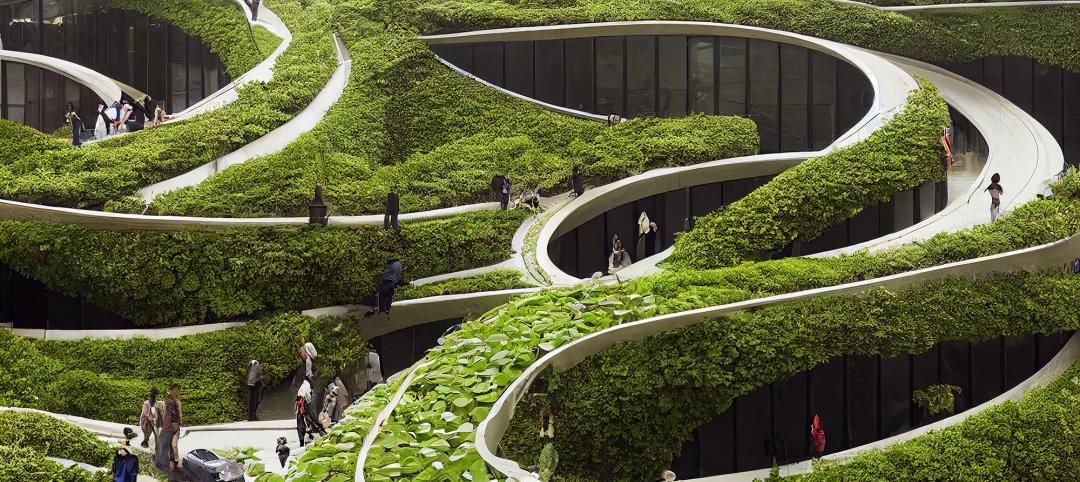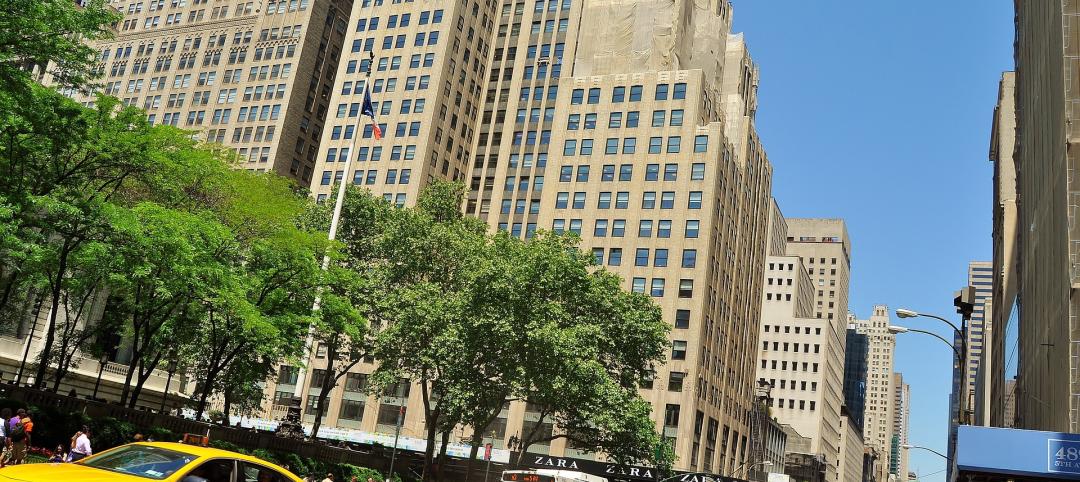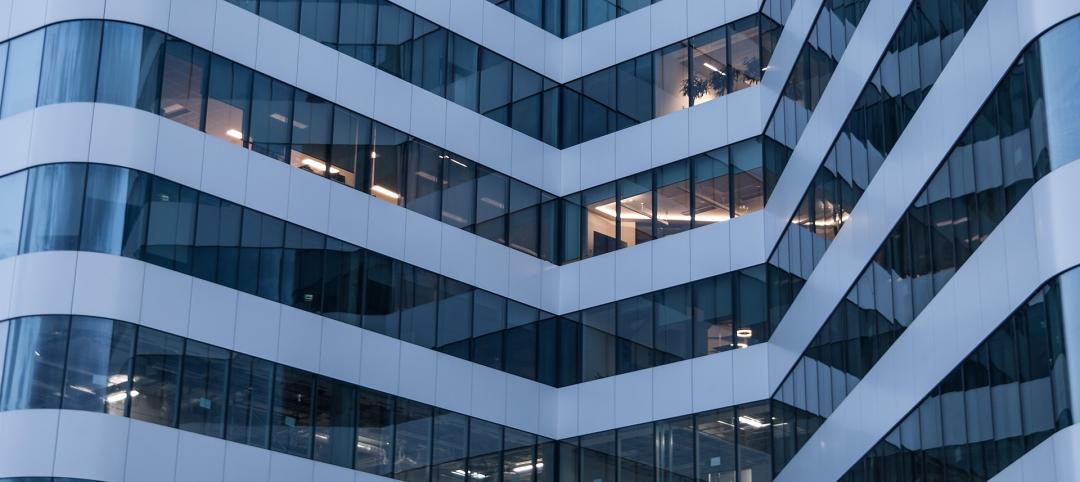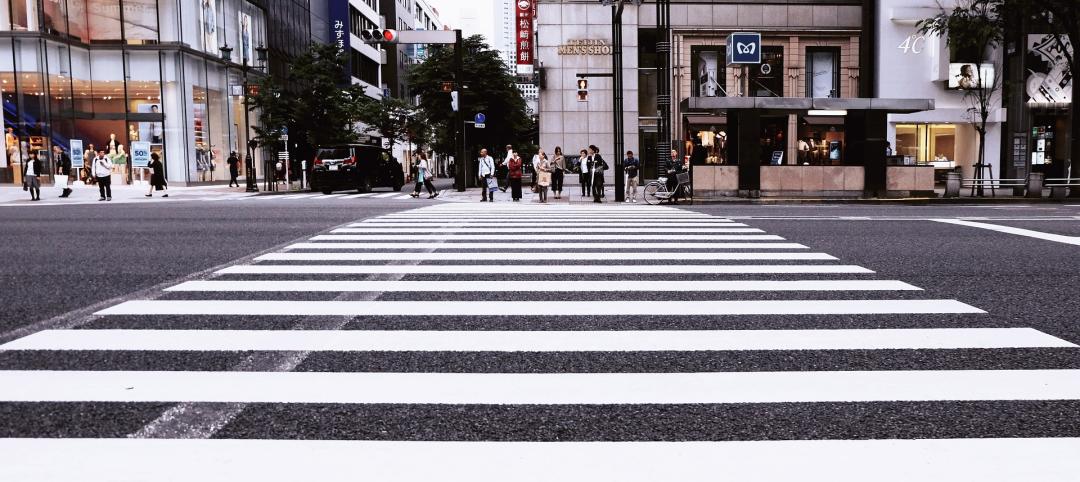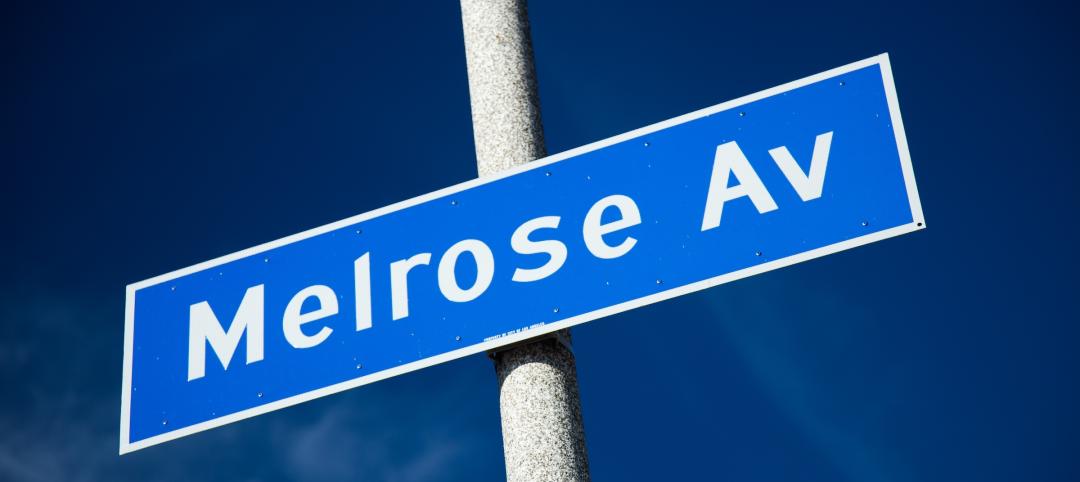Office design has always been linked to productivity—how many workers can be reasonably squeezed into a given space—but why isn’t it more frequently linked to creativity?
“In general, I don’t think enough people link the design of space to business outcome,” says Janice Linster, partner with the Minneapolis design firm Studio Hive. “Encounters and activities that happen in creative spaces outside a structured environment are important and can spark ideas that can make a project more successful.”
If office design and business outcome are so closely linked, why aren’t more office environments designed to influence and inspire creativity?
According to Linster, it’s because a lot of people approach creative office design incorrectly: “It isn’t about a creative desk or a creative conference room or bright paint. It’s about the whole experience of being in this workplace and thinking through every step of a daily routine.”
BD+C interviewed several leading architects about offices that they designed to support and influence creativity. Perhaps the special features they worked into their designs will serve as a source of inspiration for your next office project.
Architect: Johnson Chou
Project: Grip Limited
 The "hot tub" conversation pit seats 10 and is designed to inspire Grip Limited's employees and disarm its clients. The beer tap on the adjacent countertop is a nod to the firm's beer clients. Photos: Tom Arban Photography |
For years, beer paid the bills at Grip Limited, a Toronto-based advertising agency known for creating memorable campaigns for such clients as Labatt Breweries of Canada and InBev, whose many beer brands include Bass, Beck’s, and St. Pauli Girl. The ad firm’s partners, however, worried they were being typecast as “beer guys” when they wanted to be seen as a sophisticated agency that’s versatile enough to land blue-chip clients and still enjoy success with their bread-and-butter beer accounts.
A new image required new ideas, so Grip’s partners hired architect Johnson Chou, principal at his eponymous Toronto design firm, to create an office that would inspire creativity on the part of their staff. “The environment itself had to be inspiring, and to be inspiring and creative, you have to have experiences,” says Chou, who transformed 21,500 sf of unfinished downtown office space into the agency’s new creative studio, complete with a bright orange slide, a fire pole, and a “hot tub” conversation pit with an adjacent beer tap (Labatt is still a key client).
The firm’s three-story office space, completed for under $2 million in May 2006, has succeeded in inspiring Grip’s nearly 100 employees to think differently and creatively—and successfully pushed the firm’s image forward in the corporate world. Grip Limited’s client roster now includes automakers Honda and Acura, as well as pharmaceutical giant GlaxoSmithKline. You can’t get more blue chip than that.
 For those who find stairs too pedestrian, Grip Limited has a slide and a fire pole, which do get used, according to architect Johnson Chou. Versatile seating for impromptu conversations includes contoured window seats and an upholstered fire pole landing-even bleachers (left, next to staircase). The atrium's white walls double as projection screens. |
How architect Johnson Chou’s design for Grip Limited’s office influences creativity:
1. Inspire but don’t distract. The Grip office has a slide and a fire pole connecting the main two floors, but they don’t distract from the work environment because they’re located in the entry atrium. “I wanted to create a sense of energy and I wanted the space itself to be inspiring, but obviously I wasn’t going to have a hot tub conversation pit in a quiet area,” says Chou. “You have to strike a balance and put things where they belong.”
Chou also made sure to reduce distractions in the open workstation areas by enclosing nearby meeting spaces. “You have to respect the people around you, and collaboration space in private areas just can’t be as open,” says Chou. Of course a little noise is perfectly acceptable in such environments because it signifies the hum of excitement and creativity.
2. Inventive collaboration spaces. Creative thinkers often work in teams and are inspired by one another, so Chou included a mix of collaboration and meeting spaces that allow formal, informal, and spontaneous encounters. “There are meeting areas everywhere,” says Chou. They include a formal boardroom called “The Fridge” (the room’s outer walls are clad in stainless steel and its inner walls in white synthetic grass to suggest frost); multiple small meeting rooms (with the same white synthetic grass) are called “Ice Cubes.”
The 10-person hot tub conversation pit is often used to inspire—and disarm—the firm’s clients. The atrium circulation space has versatile soft seating to encourage employees to stop for ad hoc conversations. Presentations are given in the atrium, whose white walls double as a projection screen; permanent bleacher seating can accommodate the entire staff.
3. Let the client’s clients serve as inspiration. “If you’re concerned about being creative and imbuing that on your clients, you have to be very conscious of image,” says Chou. “Use ideas they already have and reinterpret them into the space. Be inspired by the client’s work.”
Thus, Grip’s reception desk is clad in black rubber, a nod to the firm’s automotive clients. The fridge and frost motifs are nods to beer clients. The slide’s orange color is borrowed from the Grip Limited logo. “Details are what’s really important to the creative environment, and it’s what always gets lost because of budget issues or burnout on a project,” says Chou. “But it’s the details that inspire people the most.”
|
Architect: Sasaki Associates
Project: Monitor Group
Sasaki Associates, based in Watertown, Mass., recently completed offices for two different clients who had a similar request: Give us office spaces that would inspire creativity in employees and collaboration among colleagues.
Sasaki’s design for the new 100-person San Francisco office of Monitor Group, a business consulting firm, encompassed 28,374 sf in an SOM-designed high-rise, but the firm’s insistence on an all-private office environment (a company recruiting strategy: prospective hires are told they will get a shared office rather than a cubicle) proved nettlesome to the design team.
How Sasaki Associates’ design for Monitor Group’s office influences creativity:
1. The piazza and the sandbox. “Insight often comes to employees when they get out of their office, go to another space, and interact with colleagues,” says Cathy Bell, principal at Sasaki Associates. The piazza and sandbox are those spaces. Bell designed a floor plan consisting of a grid of cross streets intersected by a diagonal main street, with the elliptical piazza sitting at one end and the sandbox on the other.
The piazza serves as the hub of the office, part coffee bar, part library, part meeting area, and part mailroom. (With square footage at such a premium, many offices can’t afford to have single-purpose lunchrooms, so spaces are evolving into these types of multipurpose centers.) “There are lots of things that make people have to go there, so it’s the perfect creative space because it allows impromptu interactions,” says Bell. However, Bell advises against going overboard with such spaces. “You don’t want too many because the whole point is to provide chances to run into someone you wouldn’t ordinarily run into,” she says. “If there are too many, you might never run into them.”
The sandbox, a touchdown space just off the lobby, is designed mostly for interaction with clients. Several meeting rooms connect to this space, which also has a computer alcove and a library niche displaying publications authored by Monitor Group employees.
2. Main Street. Hallways are great spaces for spontaneous interactions, and architects at Sasaki originally thought that employees would reap the benefits of wide hallways. Wrong! “We found that wide hallways allowed employees to ignore each other as they passed,” says Bell. For the Monitor Group’s main street, Bell designed an alcove to encourage people to step our of the foot traffic and talk or sit down together.
3. Cockpits. Maintaining privacy while cutting down on distracting noise can be a huge problem in offices with open elements—even those with private offices—so Bell designed small 80-sf enclosed spaces called cockpits, which are scattered throughout the office for employees who need short-term privacy and isolation from noise.
 The large piazza is the hub of Monitor Group's San Francisco offices, the mixed-use space serves as the lunchroom ( a full kitchen is out of view behind the coffee bar), a meeting area, a library, and the mailroom. Photo: Robert Benson |
Architect: Hixson Architecture, Engineering, and Interiors
Project: Ethicon Endo-Surgery
The 17,954-sf Ethicon Endo-Surgery research and development center in Cincinnati, Ohio, was designed by local firm Hixson Architecture, Engineering, and Interiors to be a place where out-of-the-box thinkers could create new medical devices free from the confines of the firm’s corporate headquarters.
Purposely located about a mile from the company’s main offices, this converted warehouse space was conceived of as a kind of creative “skunkworks,” where new ideas could flourish apart from too much corporate influence. “For this space, the client wanted organized chaos,” says Colleen McCafferty, interior design lead and workplace strategist at Hixson.
How Hixson’s design for Ethicon Endo-Surgery influences creativity:
1. Visual stimulation. “This space energizes people,” says McCafferty. “It makes them want to work.” There was a real push to add color, angles, a variety of lighting, and whimsical elements (such as garage doors for the conference room) to get people to see and think differently. Perimeter walls are covered with marker boards—one huge band, six feet high, running around the building. Most of the office is open studio space. “We took away a lot of real estate from the individual and gave it back to the communal,” says McCafferty, who suggests that when planning such open areas, create buffer zones between the various activities.
2. Coffee bar extraordinaire. The office has very few designated meeting areas—only the one conference room—and no hallways to facilitate spontaneous conversation, so the design team expanded on the idea of the coffee counter as the common area, similar to how Sasaki created a piazza for the Monitor Group. Located front and center, the communal coffee bar is not large but it’s prominent, hip, and enticing—perfect for encouraging serendipitous encounters. “We’re creating areas that just happen to support social interaction even if those interactions aren’t sought out,” says McCafferty. Bryon Sutherly, senior project architect at Hixson, adds, “The trend is to create that type of space where people can just run into someone else they may not interact with frequently and as a result, the interaction can result in the most creative things coming about.”
Architect: Sasaki Associates
Project: Continuum
The Swiffer sweeper, Reebok’s “pump” sneaker, and a host of other iconic consumer products were designed by Continuum of West Newton, Mass. When the firm decided to expand its two-story office in an old shoe factory to 45,000 sf, they asked Sasaki to open up the office and connect people as much as possible. “This office had to be entirely about creativity, collaboration, and process,” says Victor Vizgaitis, senior associate at Sasaki.
How Sasaki Associates’ design for Continuum influences creativity:
1. Open studios. There are a few private rooms to keep brand and product development confidential, but otherwise the bulk of the office is open collaborative studio space, with some informal meeting spaces and few fixed walls. Almost all workstations are open desks, a concept that first worried Continuum employees who previously had private workspaces before the expansion. “They were worried their productivity would go down and that earnings would go down,” says Nancy Harrod, interior designer at Sasaki. But during the six-month renovation, everyone was moved to open desks, and earnings went up. “Everyone works better because of the interconnections,” says Vizgaitis. “The space, as much as anything else they use, has become a tool to facilitate them to do their work.”
Vizaitis has a simple tip for placating employees who want more privacy or quiet: just locate their desk to the quietest areas, such as the back of the office or at the end of a run of desks. However, Harrod says, “These offices are quieter than you think. It all has to do with what someone’s perception of noise is.”
2. Neutral environment. Frequently, people associate bright colors and snazzy materials with creative environments, but decoration doesn’t make the space; in Continuum’s office, bright colors would prove overwhelming and become a detriment to the employees’ creative process. “They work with color and material all the time and are very sensitive to it,” says Harrod. “It was important to have a neutral background that’s not impacting their ability to do their work.”
Related Stories
Cultural Facilities | Aug 21, 2024
Baltimore’s National Aquarium opens 10,000-sf floating wetland that mimics the harbor’s original tidal marsh habitat
The National Aquarium in Baltimore has opened the National Aquarium Harbor Wetland, a 10,000-sf floating wetland that mimics the Inner Harbor’s original Chesapeake Bay tidal marsh habitat. Located between Piers 3 and 4 on Baltimore’s Inner Harbor, the $14 million project features more than 32,000 native shrubs and marsh grasses.
Mixed-Use | Aug 21, 2024
Adaptive reuse of a Sears store becomes luxury mixed-use housing
6 Corners Lofts at 4714 W Irving Park Road, Chicago, Ill., opened in March of 2024 as a 394,000-sf adaptive reuse project born out of a former Sears store.
Building Materials | Aug 19, 2024
Federal 'buy clean' construction materials label program unveiled
The U.S. Environmental Protection Agency announced a plan for implementing a new label program to boost American production of more climate-friendly construction materials and products. The label program will prioritize steel, glass, asphalt and concrete.
Museums | Aug 19, 2024
The Tampa Museum of Art will soon undergo a $110 million expansion
In Tampa, Fla., the Tampa Museum of Art will soon undergo a 77,904-sf Centennial Expansion project. The museum plans to reach its $110 million fundraising goal by late 2024 or early 2025 and then break ground. Designed by Weiss/Manfredi, and with construction manager The Beck Group, the expansion will redefine the museum’s surrounding site.
AEC Tech | Aug 19, 2024
Harnessing AI to revolutionize architectural design and creativity
Architects are wondering if AI will replace us. For Vessel, the gains offset the fear. We believe there is wisdom in the unattributed quote, “You won’t lose your job to AI. You will lose your job to someone using AI.”
Reconstruction & Renovation | Aug 19, 2024
Movement to protect historic buildings raises sharp criticism
While the movement to preserve historic buildings has widespread support, it also has some sharp critics with well-funded opposition groups springing up in recent years. Some opponents are linked to the Stand Together Foundation, founded and bankrolled by the Koch family’s conservative philanthropic organization, according to a column in Governing magazine.
Government Buildings | Aug 19, 2024
GSA posts new RFI for enabling energy efficiency, decarbonization in commercial buildings
The U.S. General Services Administration (GSA), in collaboration with the U.S. Department of Energy, recently released a new Request For Information (RFI) focused on enabling energy efficiency and decarbonization in commercial buildings. GSA wants to test innovative technologies through GSA’s Center for Emerging Building Technologies.
MFPRO+ New Projects | Aug 16, 2024
At 60 stories, the Paramount multifamily development will stand as Nashville’s tallest high rise
When complete, the 60-story Paramount building, at 750 feet high, will be the tallest high rise tower in Nashville, Tenn., surpassing the city’s current record holder, the 617-foot AT&T Building. The $390 million Paramount project recently launched condo sales after securing more than $230 million in construction financing.
Urban Planning | Aug 15, 2024
New York City begins first large-scale porous pavement installation
New York City is installing its first large-scale porous pavement installation along seven miles of roadway in Brooklyn. The project will keep 35 million gallons of stormwater out of the combined sewer system each year, according to a news release.
Urban Planning | Aug 15, 2024
The magic of L.A.’s Melrose Mile
Great streets are generally not initially curated or willed into being. Rather, they emerge organically from unintentional synergies of commercial, business, cultural and economic drivers. L.A.’s Melrose Avenue is a prime example.







